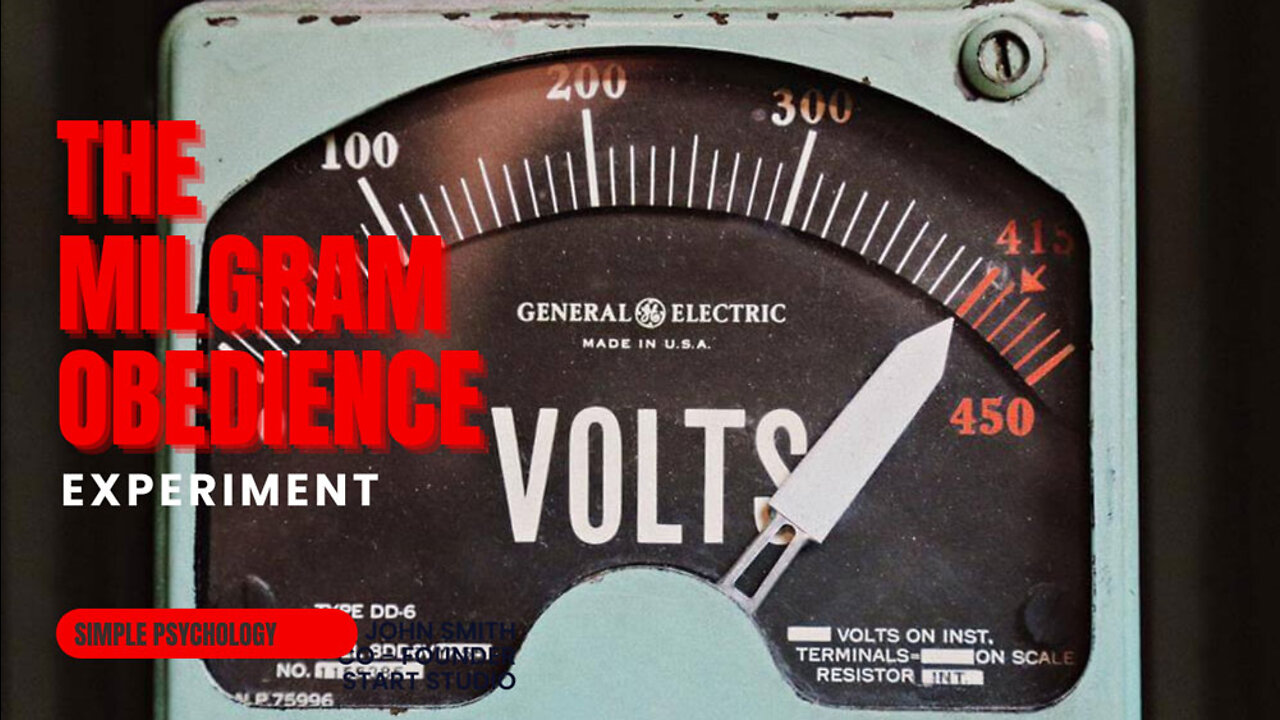Premium Only Content

The Milgram Obedience Experiment: Jaw-Dropping Sheeple Psychology
Milgrams Experiment on Obedience to Authority
Gregorio Billikopf Encina
University of California
Why is it so many people obey when they feel coerced? Social psychologist Stanley Milgram researched the effect of authority on obedience. He concluded people obey either out of fear or out of a desire to appear cooperative--even when acting against their own better judgment and desires. Milgram�s classic yet controversial experiment illustrates people's reluctance to confront those who abuse power. It is my opinion that Milgram's book should be required reading (see References below) for anyone in supervisory or management positions.
Milgram recruited subjects for his experiments from various walks in life. Respondents were told the experiment would study the effects of punishment on learning ability. They were offered a token cash award for participating. Although respondents thought they had an equal chance of playing the role of a student or of a teacher, the process was rigged so all respondents ended up playing the teacher. The learner was an actor working as a cohort of the experimenter.
"Teachers" were asked to administer increasingly severe electric shocks to the "learner" when questions were answered incorrectly. In reality, the only electric shocks delivered in the experiment were single 45-volt shock samples given to each teacher. This was done to give teachers a feeling for the jolts they thought they would be discharging.
Shock levels were labeled from 15 to 450 volts. Besides the numerical scale, verbal anchors added to the frightful appearance of the instrument. Beginning from the lower end, jolt levels were labeled: "slight shock," "moderate shock," "strong shock," "very strong shock," "intense shock," and "extreme intensity shock." The next two anchors were "Danger: Severe Shock," and, past that, a simple but ghastly "XXX."
In response to the supposed jolts, the "learner" (actor) would begin to grunt at 75 volts; complain at 120 volts; ask to be released at 150 volts; plead with increasing vigor, next; and let out agonized screams at 285 volts. Eventually, in desperation, the learner was to yell loudly and complain of heart pain.
At some point the actor would refuse to answer any more questions. Finally, at 330 volts the actor would be totally silent-that is, if any of the teacher participants got so far without rebelling first.
Teachers were instructed to treat silence as an incorrect answer and apply the next shock level to the student.
-
 16:25
16:25
The Aquarius Bus
4 months agoSalt Lake City, Utah. 1860. Built or Found? Again, where are the people?
1.35K6 -
 LIVE
LIVE
Akademiks
4 hours agoDrake and PartyNextDoor '$$$4U' Album Sells 250K first week. BIG AK IS BACK.
3,152 watching -
 LIVE
LIVE
MyronGainesX
3 hours ago $14.83 earnedDan Bongino Named As Deputy Director Of FBI And CPAC Recap
2,672 watching -
 DVR
DVR
vivafrei
3 hours agoBarnes Live from Seattle - Defending Benshoof in a Case that is CRAY CRAY!
50.3K17 -
 2:12:12
2:12:12
Robert Gouveia
3 hours agoLiberals EXPLODE over Elon's Email; Lawsuits FLY; Sanctions?? Congrats Dan!
30.7K6 -
 1:33:36
1:33:36
Redacted News
4 hours agoBREAKING! PUTIN LAUNCHES MASSIVE OFFENSIVE IN UKRAINE AS EUROPEAN LEADERS PUSH FOR MORE WAR
89K167 -
 44:39
44:39
Kimberly Guilfoyle
4 hours agoBetter Days Ahead for the FBI, Live with Asm Bill Essayli & John Koufos | Ep.199
43.1K23 -
 1:40:29
1:40:29
In The Litter Box w/ Jewels & Catturd
1 day agoWhat Did You Do Last Week? | In the Litter Box w/ Jewels & Catturd – Ep. 748 – 2/24/2025
92.6K30 -
 23:34
23:34
Stephen Gardner
4 hours ago🔥CNN PANICS over $5000 DOGE Dividend | Trump Orders bigger Audits
54.7K114 -
 1:53:54
1:53:54
The White House
6 hours agoPresident Trump Holds a Press Conference with President Emmanuel Macron of France
72.7K40